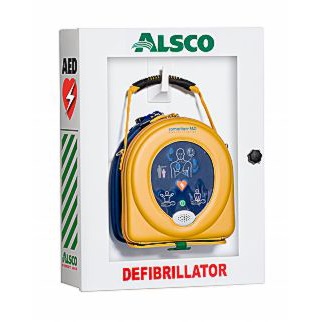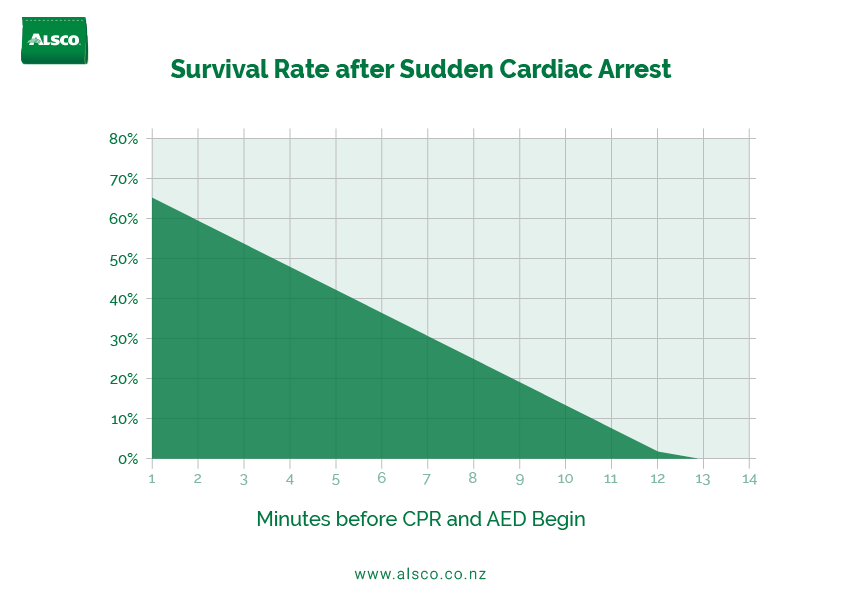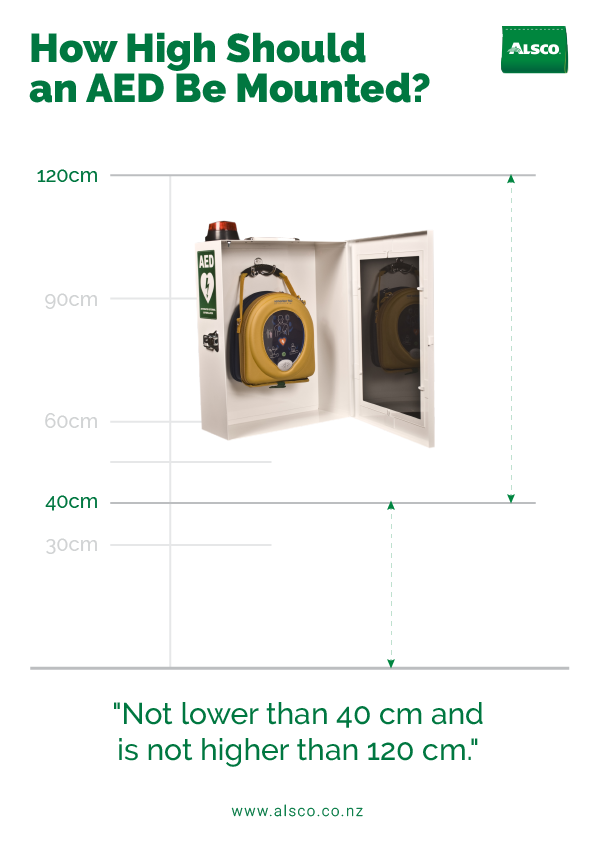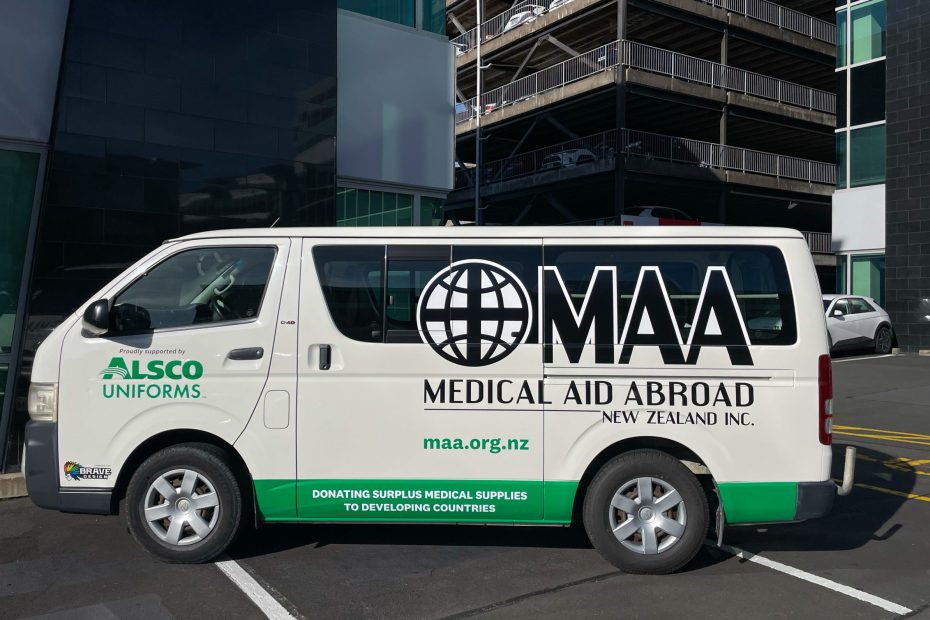Yes. Your AED requires some maintenance because it needs to be operational at all times. Check it every 6 weeks, at least. You should do the following every 4-6 weeks:
- Test primary battery by pressing the button and checking if the AED starts to work.
- Test the secondary battery, if there is one, by inserting it into the AED.
- Check the AED pads for expiry date.
- Check the data card if your AED uses one.
You can never tell when an emergency can happen. When it does, there is no time to fix an AED that is not working for some reason.
A broken AED means reduced chances for survival until the ambulance arrives.
That is why you should maintain your AED. If you are not sure if you can maintain regular servicing, leave that to Alsco New Zealand. We rent AEDs that are perfect for the workplace. Moreover, you don’t have to worry about their maintenance.
We include the servicing, maintenance and all regular checkups in your monthly fee. You call us and we set it all up. Get Alsco NZ to provide you with fully functional AEDs at all times.
What Is an AED?
AED is a portable electronic device that is used for emergency treatment of dangerous heart conditions which can cause grave consequences. AED stands for Automatic External Defibrillator. Defibrillation is the emergency treatment of cardiac dysrhythmias by the means of administering electrical shocks to the heart.
You should use an AED as your first response tool when a person suffers from a sudden cardiac arrest (SCA). Actually, what you treat with an AED is the abnormal heart rate that happens because of a cardiac arrest. There are different abnormalities in heart rate and an AED helps with Ventricular Tachycardia (V-Tach) and Ventricular Fibrillation (VF).
What Is the Average Cost of an AED?
Your average AED costs anywhere from $2,500 to $3,000. That is only the price of the new device. Here are some comparative prices.
| Device model | Lowest price | Highest price |
| Heart Saver AED7000 | $1,895.00 | $2,425.00 |
| Heart Saver AED7000 Plus | $2,195.00 | $2,695.00 |
| ZOLL AED Plus | $2,750.00 | $2,800.00 |
| Defibtech Lifeline AED Semi Package | $2,450.00 | $3,050,00 |
Remember that you need to replace the pads regularly and they don’t cost less than $80. The waterproof wall box for your AED costs around $1,000. These costs add up to a significant amount within a year.
Not to mention the time it takes to replace these when necessary as well as making sure to remember! That’s why it’s a much better option to rent the AEDs for a flat monthly fee. This means that all that fuss about batteries, pads and installation won’t have anything to do with you.
Alsco New Zealand offers HeartSine Samaritan 500P AED. It is portable, durable and easy to use. Anybody can use it, even without specialist training.
In the case of an emergency, using the AED like HeartSine Samaritan 500P, you will drastically increase the chances of survival for the person who’s suffered a cardiac arrest.
This AED model is:
- Practical and portable – weighing 1.13kg and measuring 20×18.4×4.8cm. Our defibrillators can be used by anyone, anywhere
- Durable and long-lasting – dust, water and shock-resistant and come with an 8-year warranty. These defibrillators are suited for even the most hazardous workplaces
- Advanced technology – cardiac detection selects and delivers the charge automatically for maximum safety and effectiveness
- Foolproof – voice instructions, automated shock delivery and 2-button operation means anyone operating the HeartSine Samaritan 500P will be able to save lives
Does an AED Expire?
The device itself does not expire. Just like any other electrical device, it can go on for decades, or it can stop functioning suddenly. However, since the fully operational AED is of vital importance, it is regularly checked. There is no time for such nasty surprises in the time of emergency.
From the moment a person had a cardiac arrest, to the moment the AED shocks them into normal function, there should be no more than 3 minutes. The sooner the better. Therefore, if your AED is not functional for any reason, there will be no time to find another one. That is the time that you don’t have a luxury of losing.
As you can see, this table is showing the sudden and steep drop of the survival rate as the minutes pass by. That is why you need to act fast and to have a fully operational AED handy.
Why Do You Need an AED in Your Workplace?
Take a look at these statistics that concern cardiac arrest in New Zealand and it will all be make sense. These numbers were published by Parliament NZ.
- Every year, there are 1500 primary cardiac arrests outside hospitals in New Zealand. This includes workplaces.
- Using an AED on a person suffering from cardiac arrest increases the chances of survival until the ambulance arrives from 7% to 30%
- On average, in New Zealand, it will take approximately twelve minutes for ambulance officers to get to a patient in cardiac arrest and attach and use a defibrillator. By that time, the chances of survival are very slim.
Do AEDs Need to Be Inspected?
Yes. For all the reasons listed above, the AEDs need to be inspected. The fact that you inspect it yourself regularly is great, but you should let an Alsco NZ representative do this, also.
This is done so that you are sure that the AED device is operational and all the wearable parts are functional and at their best. Inspections should be done every month.
If you rent your AED from Alsco, this is included in your monthly price. A professional will come at an agreed time and inspect all AEDs in your workplace. That is the best way to ensure they will not fail when they are the most needed.
How Often Do AED Pads Need to Be Replaced?
It is expected that your AED pads will need to be replaced every 18 to 30 months. Usually, there is an expiry date on your pads, so you need to make sure that they are replaced before that date.
The main reason why the pads need to be replaced is that they use gel as an adhesive. During CPR and the AED use, the gel is used for the AED pads to stick to the patient’s body. During CPR especially, the pads can peel off if the adhesive is not sticky enough.
This can be catastrophic as the pads need to be positioned during CPR so that the AED can determine whether a new shock is needed or not.
If the pads stay are out-of-date, the adhesive gel dries off. When they dry off, they cannot perform their function and therefore need to be replaced.
How Long Do Defibrillator Batteries Last?
The batteries in your defibrillator usually last anywhere from 2 to 5 years. However, this can depend on the manufacturer. To be absolutely sure if they are still operational, you should check the batteries and their expiration date.
In some devices, there is a spare battery. You should check both of these at least once a month. For the primary battery, you just need to click the ON button (some devices have the TEST button, as well). As for the secondary battery, simply take out the primary one, replace it with the secondary one and do the same test.
Research in the USA claim that one in four deaths, in which an AED was used, was caused by flat batteries. That’s a horrible statistic and one which could be prevented.
How High Should an AED Be Mounted?
Your AED should be mounted on the wall, so that the handle that’s used to grab it, is not lower than 40 cm and is not higher than 120 cm. This may sound very specific, but the idea behind it is that this is the range within which a person in a wheelchair can reach the AED.
It is essential that the AED is put to use as soon as possible, so it needs to be positioned in a way that facilitates easy retrieval. This means nothing should be blocking it and it should not be behind plants and similar decorations. It also needs to have a bit sign pointing to it.
When an emergency occurs, people typically get flustered and they cannot remember simple things – like where the AED is! A clearly visible sign helps.
Do You Need Training to Use a Defibrillator?
No. There is some training available that can teach you about first aid and CPR, as well as how to operate an AED. This is highly useful and, if there is any chance, offer such courses to all your employees.
But even if there is nobody in your workplace who has first aid training, AEDs are very self-explanatory.
Simply open it, press the button, and it will talk you through all the steps you need to do. You will get short and to-the-point audio instructions about what to do. It’s all about placing the pads on the person and allowing the AED to administer the shock if necessary. If it isn’t, the AED will signal that, and prompt you to continue doing CPR.
Alsco NZ includes all that maintenance in the price you agree on. Call us today and rent your workplace AED.








